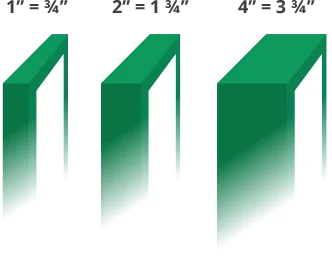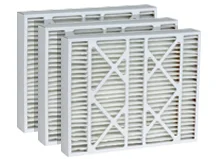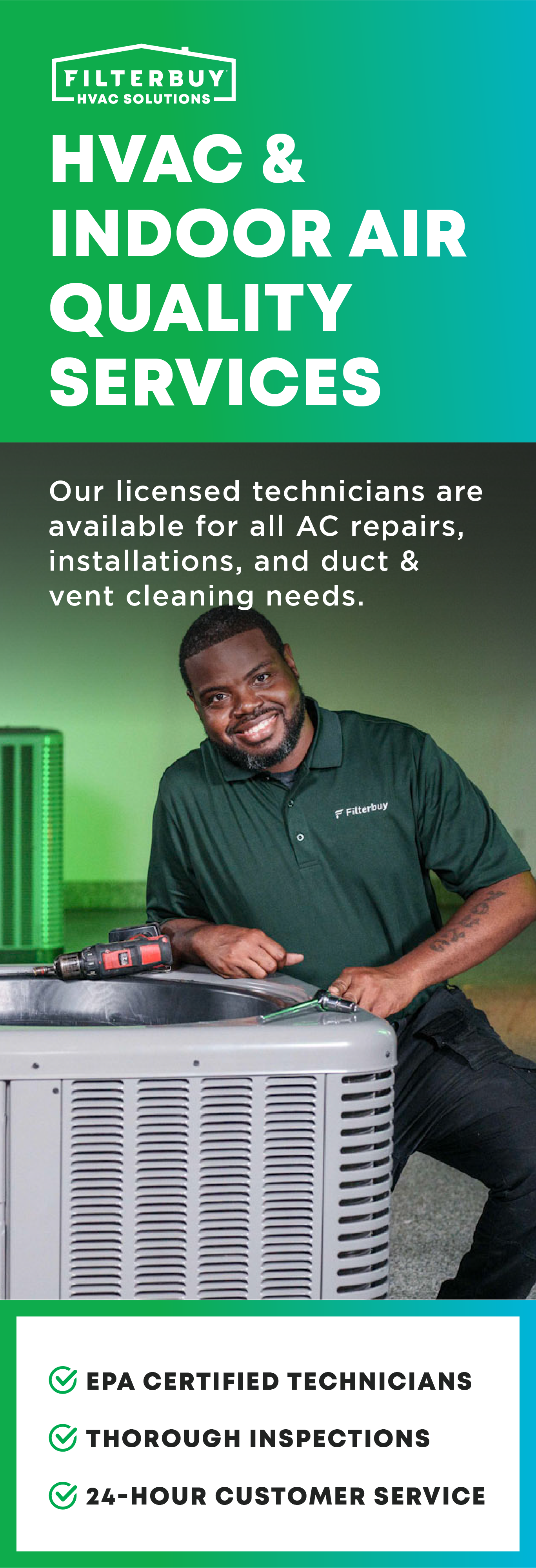We all like to think that the quality of the air inside our homes is clean and healthy, but more often than not, the truth couldn't be more different. According to a World Health Organization report as far back as 2002, indoor air pollution was responsible for 2.7 percent of the global burden of disease. It blamed fossil fuels in large part for these numbers.
It means that the air we breathe in our homes is not what it seems.
With the doors and windows shut, the same stale air is recycled through our HVAC systems, and delivered throughout the house. It’s no wonder that indoor air quality could be as much as five times more polluted than outdoor air.
So, when it comes to our living environment and the health of our families, the quality of indoor air demands to be taken seriously.
The Difference between an Air Filter vs Air Purifier
Air Filters
What are air filters?
Air filters sieve out pollutants like dust, mold, bacteria, and allergens. They serve the same purpose as an air purifier but work in a different way altogether.
Common types of air filters

- Activated carbon - Activated carbon filters are highly porous and very good at trapping matter. They are typically used as secondary or pre-filters.
- Fiberglass - Fiberglass filters are one of the most common disposable filters. They work by trapping pollutants in layers of fiberglass material. Some filters are electrostatically charged to increase the number of particles they catch.
- HEPA filters - High-Efficiency Particulate Air filters are regarded as the highest efficiency filters available, HEPA filters trap 99.97 percent of particles to a size of 0.3 microns. These filters are utilized in homes, industry, and because they are so good at filtering the air, the medical profession even uses them.
- Washable filters - Washable filters are reusable, and so the most cost-effective.

How do air filters work?
Air cleaners are built directly inside your HVAC system and let air pass through them to trap microscopic particles of pollutants. They are typically located between the air return duct and the furnace or air conditioner. This ensures that all the air flowing inside your home is clean.
The basic principles of air filters are the same; to allow the flow of air but to restrict the passage of particles. Using either fiberglass, pleated-paper, mesh, or active carbon, the filter acts like a sieve to trap particles that are larger than the holes in which the air flows, removing them from the atmosphere.
- Stage 1 - When you switch on your HVAC, it creates a constant stream of air that is drawn into the ducts and pushed through the system.
- Stage 2 - The filter is typically located between the air return duct and the furnace. Air gets forced through the filter, and particles become trapped in the media. Some filters use electrostatic technology to attract the particles, while others use HEPA filters.
- Stage 3 - The clean air is then expelled back into the home, where the entire cycle begins again.
What do air filters filter?
Air cleaners filter out many varieties of airborne pollutants, including:
- Pet dander
- Tobacco smoke
- Pollen
- Dust mites
- Soil
- Ash
- Mold
- Mildew
- Fungus
- Bacteria
- Fibers
- Other microorganisms


The primary role of an air filter is to keep your HVAC system free from debris on the inside. This means that the air that flows around your home is also clean and healthy to breathe.
Dirty air filters are the leading cause of pollutants in your home. Not only do they contaminate the air around you, but they also allow bacteria growth within your HVAC system. This leads to an ever decreasing quality of the air you breathe.
Air Purifiers
What are air purifiers?
Much like an air filter, an air purifier is a device that removes pollutants from the atmosphere, improving the quality of the air you breathe.
Common types of air purifiers

Ionic air purifiers - These purifiers create an electrical field so that particles, known as ions, are either positively or negatively charged, attaching themselves to the bacteria in the air. These ions are attracted to the opposite charge within the purifier, thus removing them from the air.
Adsorbent purifiers - These typically employ an actived carbon filter to adsorb the airborne particles within the purifier. This material is extremely porous and very useful at trapping molecules.
UV light purifiers - Ultraviolet radiation renders some microorganisms sterile, and therefore harmless.
How do air purifiers work?
Some air purifiers employ an electrical charge to attract pollutants. Unlike an air filter that traps bacteria and allergens, removing them from the air, some air purifiers use UV (Ultraviolet) germicidal light to zap the impurities away.
By far, the most typical air purifier employs a series of fans and filters to clean the air.
- Stage 1 - A powerful fan draws impure air in through a vent, usually located on the front or rear of the unit.
- Stage 2 - The dirty air is passed through a series of filters, starting with a fine mesh variety to trap larger particles like pet hairs and dust. The next stage is to force the air through a more robust filter, HEPA is the most common, to trap smaller particles up to a size of 0.3 microns.
- Stage 3 - The cleaner air is now passed through a deodorizer filter to extract any foul smells like pet odor or tobacco smoke.
- Stage 4 - Depending on the features of your purifier, step 4 could be a UV filter, or a negative ion process to neutralize any remaining bacteria.
- Stage 5 - A powerful fan blows the purified air back into the room.
What do air purifiers do?
Air purifiers relieve the suffering of victims of seasonal allergies like hay fever and other sinus-related problems, as well as helping people living with asthma to avoid a flare-up. Pollutants cover almost every surface of our homes and are disturbed when we move about, or use the furniture. This causes the bacteria to become airborne, and that’s when we are vulnerable.
An air purifier traps or neutralizes those floating particles, so you don't inhale them. This decreases the chances of you suffering an allergic reaction.
What do air purifiers filter?
Air purifiers work to clean the same pollutants from the air as an air filter. They include:
- Pet dander
- Tobacco smoke
- Pollen
- Dust mites
- Soil
- Ash
- Mold
- Mildew
- Fungus
- Bacteria
- Fibers
- Other microorganisms


Air purifiers have many methods of dealing with bacteria and allergens in the atmosphere; they either trap them by drawing them in through a series of fans, they neutralize them through an electrical field, or they zap them using ultraviolet light.
But there are limits to what an air purifier can do. Many allergens, such as dust mites, pollen, and mold, are heavier than air and so sink to the ground and become trapped in floor coverings. Air purifiers are ineffective if this happens as they can only trap microbes while they are airborne.

Whether you prefer air filters or air purifiers, one choice is plain; ignoring the quality of the air in your home means that you run the risk of increased contact with allergens and bacteria.
It means that you are susceptible to seasonal illnesses like colds, flu, sore throats and hay fever, as well as irritating lung conditions like asthma. So, keep the air in your home clean and protect your family.

.webp)
.webp)
.webp)
.webp)







